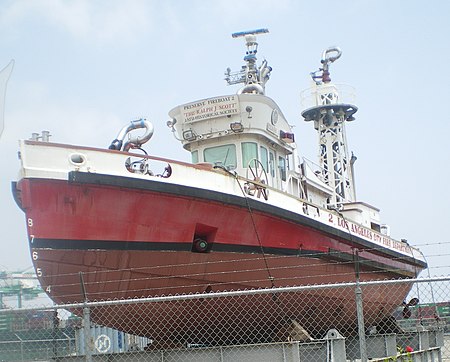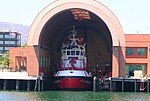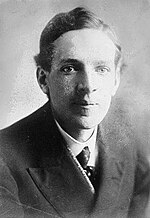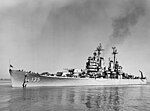Ralph J. Scott (fireboat)
1925 shipsFireboats of CaliforniaMuseum ships in CaliforniaNational Historic Landmarks in CaliforniaSan Pedro, Los Angeles ... and 1 more
Ships on the National Register of Historic Places in Los Angeles

Ralph J. Scott, also formerly known as Fireboat #2, is a 100-foot (30 m) fireboat that was attached to the Los Angeles Fire Department serving the Port of Los Angeles. She was retired in 2003 after 78 years and replaced by Warner L. Lawrence. Ralph J. Scott is undergoing restoration near the Los Angeles Maritime Museum in San Pedro. On 30 June 1989, she was listed as a National Historic Landmark. She is currently located at the Los Angeles Fire Department, Fire Station 112, at 444 South Harbor Blvd, Berth 86, San Pedro, California.
Excerpt from the Wikipedia article Ralph J. Scott (fireboat) (License: CC BY-SA 3.0, Authors, Images).Ralph J. Scott (fireboat)
Los Angeles San Pedro
Geographical coordinates (GPS) Address Nearby Places Show on map
Geographical coordinates (GPS)
| Latitude | Longitude |
|---|---|
| N 33.741343 ° | E -118.27895 ° |
Address
90731 Los Angeles, San Pedro
California, United States
Open on Google Maps








